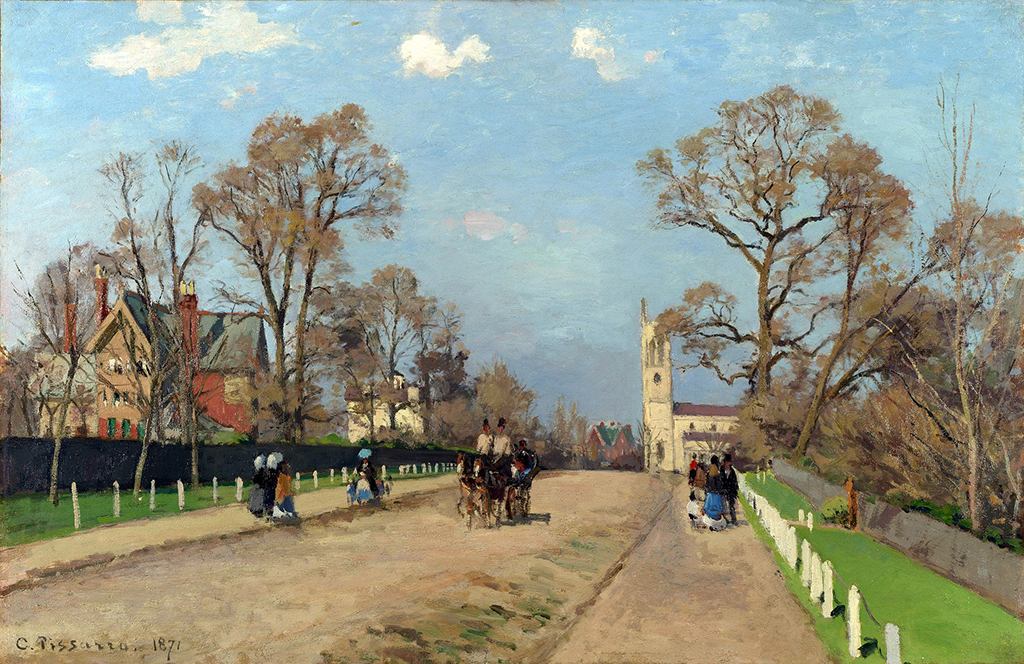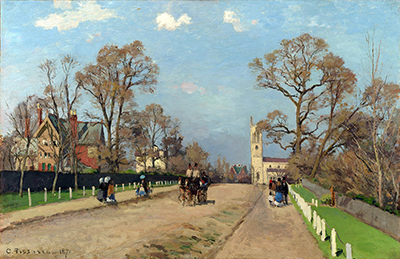The Avenue, Sydenham was one of Pissarro's biggest canvases in oil, and employs a method known as peinture claire or plein air, where white pigment is used to produce light accents and subtle shades with low contrast. The plan was to outline the landscape first, and then to add the people on top of the dried paint.
Camille Pissarro moved to the UK from France during the Franco-Prussian war of 1870 to 1871. He painted several views of Norwood (then a village on the outskirts of London), his area of residence until June 1871. Trees such as young oaks burst their buds in the clear spring sunshine and still-thin air, on either side of the avenue of the title, against the backdrop of a pale blue sky. Norwood at that time had not become the south London suburb that it is today, but this part of Sydenham is still instantly recognisable.
The church that leads the viewer's eye towards the end of the street, St Bartholomew's, still stands beyond the tree-lined road today. The posts and chains that lined the grass verges have gone, but similar ones can be seen in nearby Dulwich now. The Avenue still edges one side of Crystal Palace Park, as does another of Pissarro's works, Fox Hill, Upper Norwood.
Camille Pissarro is regarded as the father of the Impressionists, and he both influenced and instructed younger artists such as Paul Gauguin and Paul Cézanne. His own influences included the rural landscapes of Realists Gustave Corbet and Jean François Millet, while Jean-Baptiste Camille Corot mentored Pissarro on outdoor work in Paris in the 1850s. The younger artist eventually opted for a more spontaneous approach, and similarly, later in his career, he found it impossible to work for long within the rigid approach of Divisionist artists Georges Seurat and Paul Signac.
While in the English capital, Pissarro teamed up with another French Impressionist, Claude Monet, to study the paintings of John Constable and J. M. W. Turner. There is an obvious connection for the French painters, who were interested in the way that the two English artists worked outside, recording atmosphere and frequent light changes that were impossible to reproduce in a studio. Camille Pissarro was able to make use of this acquired knowledge in his impressions of Sydenham.
The Avenue, Sydenham was acquired by London's National Gallery in 1984, and was loaned to Tate Britain for the popular Impressionists in London exhibition from November 2017 for six months. The influence of this Danish-French innovator can be said to stretch from Pre-Impressionism to Post-Impressionism, and his naturalistic approach is still admired today.





